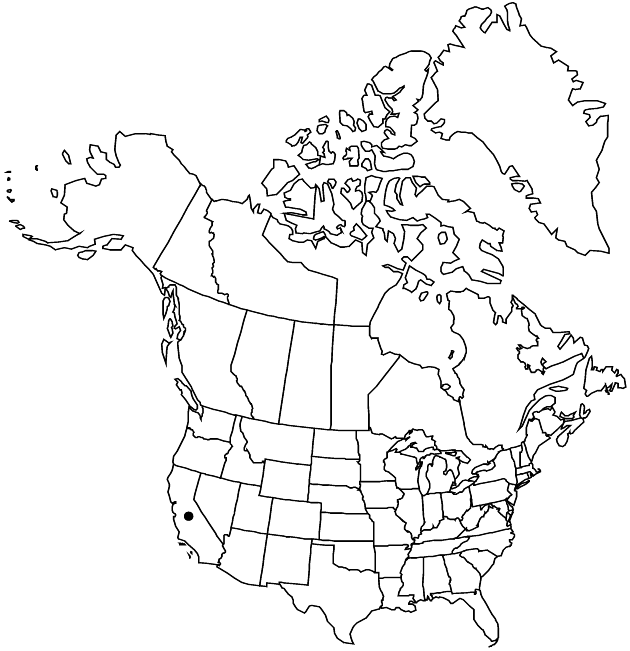Chaenactis suffrutescens
Notes Compositae, 100. 1880.
Perennials or subshrubs (10–)25–45(–60) cm (sometimes cespitose, not matted); proximal indument (especially stems) persistent, whitish, densely lanuginose or pannose. Stems mostly 5–15+, usually erect. Leaves usually ± cauline, sometimes ± basal, 5–10 cm; largest blades lance-ovate or deltate, ± plane, 1–2-pinnately lobed; primary lobes mostly 2–5 pairs, ± remote, ultimate lobes ± plane. Heads mostly 1–3 per stem. Peduncles ascending to erect, (5–)10–20 cm. Involucres ± cylindric. Phyllaries: longest 14–18 mm; outer predominantly stipitate-glandular (other indument none or sparse), apices ± squarrose, pliant. Corollas 8.5–10 mm. Cypselae 7–9 mm; pappi: longest scales 7–9 mm. 2n = 12.
Phenology: Flowering May–early Sep.
Habitat: Loose scree, sand, rocky soils, slopes, drainages, usually on serpentine or other ultramafic deposits
Elevation: 700–2300 m
Discussion
Of conservation concern.
Chaenactis suffrutescens is known from the southern and eastern Klamath Ranges and northern Coast Ranges of Trinity and Siskiyou counties (nearly to Oregon). It is sometimes cultivated in rock gardens and may be found outside its native range. Small forms of C. suffrutescens from southern Trinity County approach C. nevadensis in habit (see discussion there).
Selected References
None.
